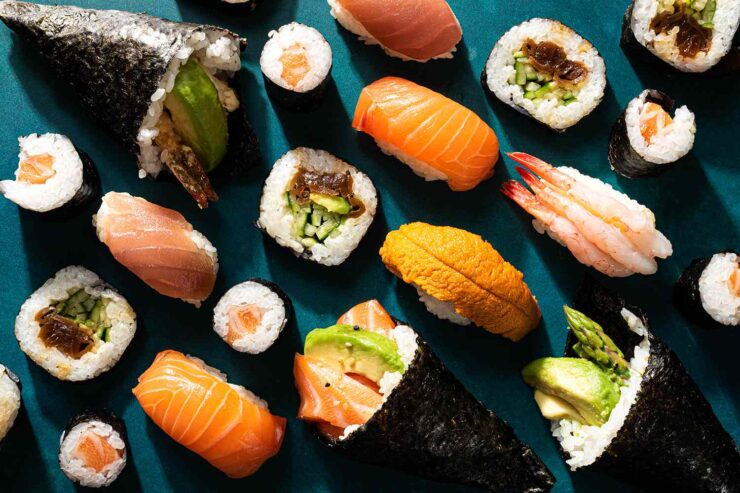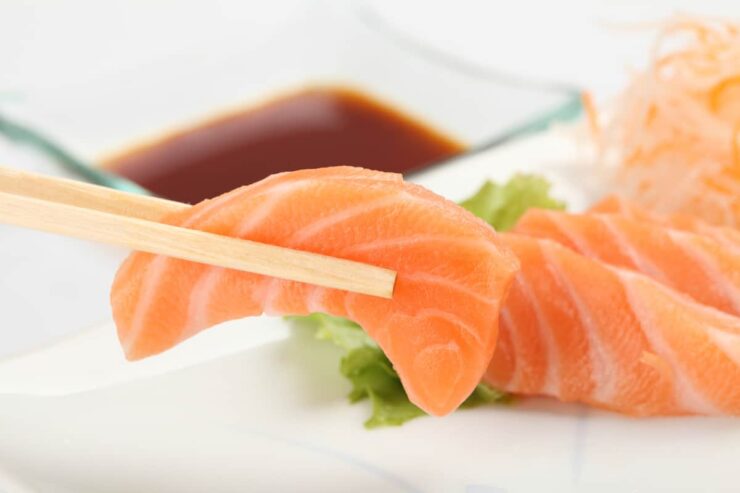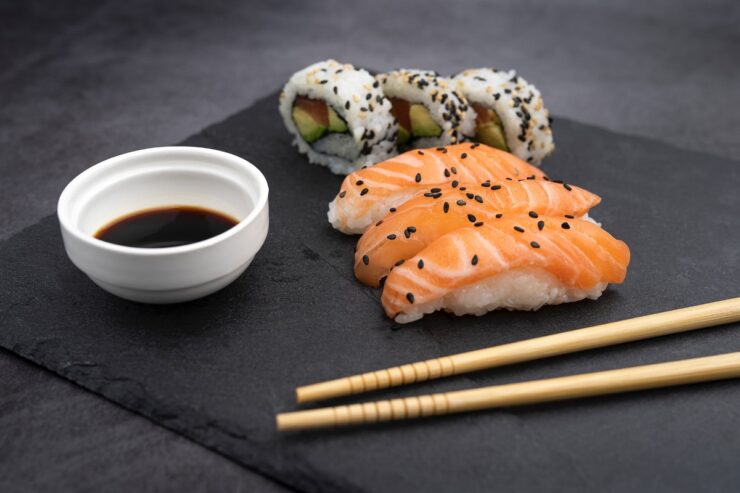Are you a lover of Japanese cuisine but get confused with all the different types of sushi? Don’t worry, you’re not alone! Sushi, sashimi, and nigiri are three popular dishes that can often leave diners scratching their heads. So what’s the difference between them? In this blog post, we’ll break down each dish and give you a comprehensive guide to help you navigate your next sushi experience like a pro. Get ready to become an expert in all things sushi!
About Sushi

Sushi is a traditional Japanese dish that has become popular worldwide. It consists of vinegared rice that is shaped into small portions and topped with a variety of ingredients, such as seafood, vegetables, and egg. The rice used in sushi is typically short-grain, which is cooked with vinegar, sugar, and salt to give it a distinct tangy flavor.
There are many types, including nigiri, maki, temaki, and sashimi. Nigiri sushi is made by placing a slice of raw fish on top of a small ball of sushi rice. Maki sushi, also known as sushi rolls, is made by rolling sushi rice and various ingredients in a sheet of seaweed. Temaki sushi, or hand rolls, is made by filling a cone-shaped piece of seaweed with sushi rice and various ingredients. Sashimi is not technically sushi, as it does not contain rice, but it is often served alongside sushi and consists of thinly sliced raw fish.
Sushi is not only delicious but also nutritious. The raw fish used in sushi is high in protein, omega-3 fatty acids, and other essential nutrients. Additionally, sushi rice contains a variety of vitamins and minerals, including thiamine and niacin.
Overall, sushi is a popular and beloved dish that has become a staple of Japanese cuisine. Its unique flavor, variety of ingredients, and health benefits make it a great choice for anyone looking for a delicious and nutritious meal.
Sashimi- slices of raw fish without rice

Sashimi is a Japanese dish consisting of thin slices of raw fish or other seafood served without rice or other accompaniments. The fish used in sashimi is typically of the highest quality and is chosen for its freshness, texture, and flavor.
It is often served as an appetizer or as part of a larger Japanese meal. It is typically sliced thinly and served with a dipping sauce, such as soy sauce, wasabi, or ponzu sauce. The dipping sauce is meant to enhance the flavor of the fish without overpowering it.
The most common fish used in sashimi include tuna, salmon, and yellowtail, but other types of seafood, such as octopus, squid, and shrimp, can also be used. The preparation of sashimi requires a high degree of skill and precision, as the fish must be sliced thinly and evenly to ensure the best possible flavor and texture.
Nigiri- a ball of vinegared sushi rice

Nigiri is a type of sushi that originated in Japan. It consists of a small ball of vinegared sushi rice that is shaped by hand and topped with a slice of fresh fish or other seafood. The fish used in nigiri is typically raw, although cooked and marinated varieties are also popular.
The preparation requires a high degree of skill and precision, as the rice must be shaped into a small, uniform ball that is firm enough to support the weight of the fish. The fish is then carefully sliced and placed on top of the rice, with a small amount of wasabi or other condiments added to enhance the flavor.
The most common fish used in nigiri include tuna, salmon, and yellowtail, but other types of seafood, such as shrimp, eel, and octopus, can also be used. In addition to fish, nigiri can also be topped with other ingredients, such as egg, tofu, or vegetables.
Nigiri is typically served as part of a larger Japanese meal or as a snack. It is often accompanied by soy sauce and pickled ginger, which are meant to cleanse the palate between bites.
It is a delicious and elegant dish that is beloved by sushi enthusiasts around the world. Its combination of fresh, high-quality fish and perfectly seasoned rice make it a true delicacy that is not to be missed.
The difference between sushi, sashimi, and nigiri
If you’re a sushi fan, you’ve probably had your fair share of nigiri, sashimi, and sushi rolls. But what exactly is the difference between these three popular Japanese dishes?
Nigiri is made with sushi-grade fish that is sliced into thin strips and then molded into balls with rice. The rice used for nigiri is usually vinegar flavored.
Sashimi is also made with sushi-grade fish, but it is not molded into balls with rice. Instead, the fish is cut into thin slices and served without rice.
Finally, sushi rolls are made by rolling vinegared rice and other ingredients in nori seaweed sheets. Sushi rolls can be filled with a variety of different ingredients, including fish, vegetables, and tofu.
How to make them?

Making sushi, sashimi, and nigiri at home is easy with these step-by-step instructions.
To make sushi, you will need: sushi rice, nori seaweed sheets, a bamboo mat, a sharp knife, fillings of your choice (raw fish, cooked shrimp, vegetables, etc.), wasabi paste and soy sauce.
1. Cook the sushi rice according to the package directions.
2. Place a sheet of nori seaweed on the bamboo mat.
3. Spread a layer of cooked sushi rice over the nori.
4. Add your desired fillings in the center of the rice.
5. Roll up the bamboo mat tightly, making sure that the rice and fillings are rolled up inside the nori sheet.
6. Slice the roll into bite-sized pieces using a sharp knife dipped in water. Serve with wasabi paste and soy sauce for dipping. Enjoy!
Conclusion
With all this newfound knowledge, you can now confidently order from any sushi menu and impress your dining partners with your culinary expertise. The next time you visit a sushi restaurant, why not try out a bit of everything to truly experience the diversity of flavors that these dishes have to offer? From sashimi, nigiri, and even make rolls – there’s something for everyone in the world of Japanese cuisine!

